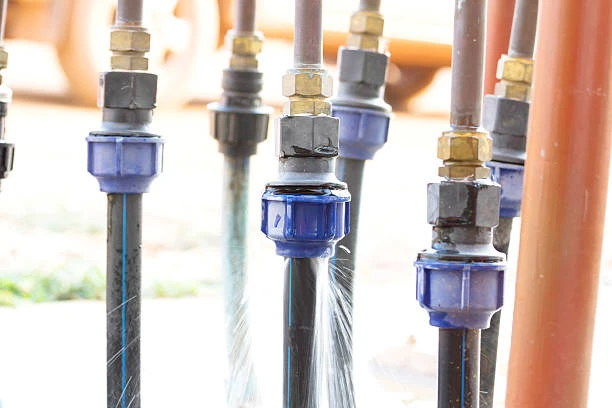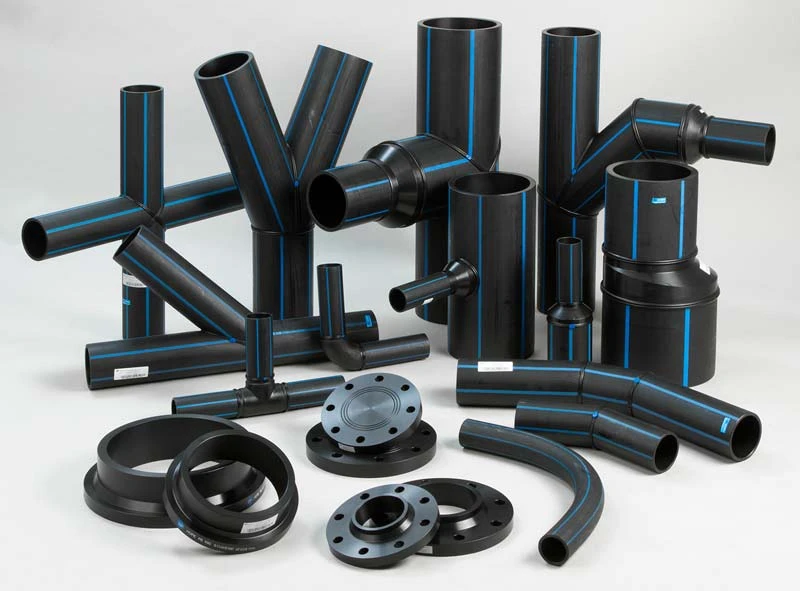In a significant move towards improving infrastructure, officials in Georgia are currently testing large High-Density Polyethylene HDPE pipe. This initiative reflects a growing emphasis on enhancing water management systems and ensuring the resilience of municipal utilities. The testing of these pipes is a crucial step in evaluating their performance, durability, and suitability for various applications. In this article, we will explore the importance of HDPE pipes, the testing process, their benefits, and the future of water infrastructure in Georgia and beyond.

Understanding HDPE Pipe
High-Density Polyethylene (HDPE) pipes are manufactured from thermoplastic materials that offer a unique combination of strength, flexibility, and resistance to various environmental factors. Due to these characteristics, HDPE pipes have become a popular choice for many applications, including water supply, sewage systems, and industrial uses.
Key Characteristics of HDPE Pipe
- Durability: HDPE pipes have a lifespan exceeding 50 years, making them a long-term solution for infrastructure projects.
- Corrosion Resistance: Unlike metal pipes, HDPE does not rust or corrode, ensuring reliability in various conditions.
- Chemical Resistance: HDPE pipes can withstand a wide range of chemicals, making them suitable for industrial applications.
- Flexibility: Their flexibility allows for installation in challenging environments and adapts to ground movements without cracking.
- Lightweight: HDPE pipes are lighter than traditional materials, facilitating easier transportation and installation.
The Importance of Testing Large HDPE Pipe
1. Ensuring Reliability
Testing large HDPE pipes is essential to ensure their reliability in real-world applications. Municipalities depend on these pipes for critical infrastructure, such as water distribution and sewage management. By conducting rigorous tests, officials can verify that the pipes will perform as expected over their intended lifespan.
2. Evaluating Performance Under Pressure
Large HDPE pipes are often used in high-pressure applications. Testing helps determine how these pipes respond to stress, which is crucial for preventing leaks and failures. This performance evaluation is particularly important for cities with aging infrastructure that require upgrades.
3. Assessing Environmental Impact
Understanding how HDPE pipes perform in various environmental conditions is vital for sustainable water management. Testing can reveal how these pipes react to factors like temperature fluctuations, soil conditions, and potential exposure to chemicals. This information helps officials make informed decisions about material selection.
4. Compliance with Standards
Testing is necessary to ensure that large HDPE pipes comply with industry standards and regulations. Compliance is essential for municipal projects, as it guarantees that the materials used meet safety and performance benchmarks.
The Testing Process HDPE pipe
The testing of large HDPE pipes involves several critical steps:
1. Preparation
Before testing, the pipes must be prepared and installed according to specified guidelines. This includes ensuring that the pipes are clean, free of defects, and properly aligned.
2. Pressure Testing
Pressure testing involves filling the pipes with water and applying pressure to determine their ability to withstand stress. This test helps identify any weaknesses or potential failure points in the pipes.
3. Environmental Testing
Environmental testing assesses how the pipes perform under different conditions, such as varying temperatures and soil types. This step helps evaluate the long-term durability and performance of the pipes in real-world scenarios.
4. Monitoring and Analysis
Throughout the testing process, officials monitor various parameters, including pressure levels, temperature changes, and any signs of deformation or leaks. Data collected during this phase is analyzed to determine the pipes’ overall performance.
5. Reporting Results
After completing the tests, officials compile and report the results. This report includes findings on the pipes’ durability, performance under pressure, and suitability for specific applications. These insights inform future decisions about water management infrastructure.
Applications of Large HDPE Pipe
Large HDPE pipes have a wide range of applications, particularly in infrastructure projects:
1. Water Supply Systems
Municipal water supply systems benefit significantly from large HDPE pipes, as they can transport large volumes of water efficiently. Their resistance to corrosion ensures the delivery of clean drinking water to communities.
2. Wastewater Management
In wastewater management, large HDPE pipes provide a reliable solution for transporting sewage and stormwater. Their smooth interior surfaces reduce friction, minimizing the risk of blockages.
3. Industrial Uses
Industries such as oil and gas, mining, and chemical processing rely on large HDPE pipes to transport various materials. Their chemical resistance makes them suitable for handling hazardous substances.
4. Telecommunications
Large HDPE pipes are also used for underground cable installations in telecommunications. Their lightweight and flexible nature simplifies the installation process, reducing labor costs.
5. Agricultural Irrigation
In agriculture, large HDPE pipes play a vital role in irrigation systems, delivering water efficiently to crops. Their durability ensures long-term performance in outdoor environments.
Benefits of Large HDPE Pipe
The adoption of large HDPE pipes offers numerous advantages for municipalities and industries alike:
1. Cost-Effectiveness
While the initial investment in HDPE pipes may be higher than traditional materials, their longevity and low maintenance requirements result in significant cost savings over time.
2. Reduced Leakage
HDPE pipes have lower leakage rates compared to traditional piping materials, which is essential for conserving water and reducing operational costs for municipalities.
3. Easy Installation
The lightweight nature of HDPE pipes simplifies the installation process, leading to quicker project completion and reduced labor costs. Various installation methods, including trenchless technology, can be employed for minimal disruption.
4. Environmental Sustainability
As environmental concerns grow, HDPE pipes are increasingly recognized for their eco-friendly properties. They are fully recyclable and contribute to sustainable construction practices.
5. Flexibility and Adaptability
The flexibility of large HDPE pipes allows for installation in various environments and conditions, making them suitable for diverse applications.
Market Trends in the HDPE Pipe Industry
The HDPE pipe market is witnessing several trends that highlight its growing significance:
1. Increasing Demand for HDPE pipe Infrastructure
As urbanization accelerates and populations grow, the demand for reliable infrastructure is rising. This trend is driving the need for durable HDPE piping solutions in water supply and wastewater management.
2. Shift Towards Sustainable Practices
With increasing awareness of environmental issues, many industries are seeking sustainable materials. HDPE pipes align with this trend due to their recyclability and reduced environmental impact.
3. Technological Advancements
Advancements in manufacturing technologies are enhancing the quality and performance of HDPE pipes. Innovations in production processes lead to more efficient and durable piping solutions.
4. Regulatory Support
Government regulations promoting the use of sustainable materials are encouraging the adoption of HDPE pipes. Compliance with these regulations is driving growth in the HDPE pipe market.
Future Prospects for Large HDPE Pipe
The future of large HDPE pipes looks promising, particularly as Georgia officials continue their testing efforts.
1. Growth in Infrastructure Investment HDPE pipe
As municipalities invest in upgrading and expanding infrastructure, the demand for large HDPE pipes is expected to rise. This growth presents opportunities for manufacturers and suppliers in the HDPE market.
2. Job Creation
Increased demand for HDPE pipes will likely lead to job creation in manufacturing, logistics, and construction, contributing to economic development in local communities.
3. Enhanced Research and HDPE pipe Development
Continued investment in research and development will lead to innovations in HDPE pipe technology. These advancements may result in improved materials and products that meet evolving market needs.
4. Focus on HDPE pipe Water Conservation
With water scarcity becoming a pressing issue, the adoption of efficient piping solutions like HDPE pipes will play a crucial role in conservation efforts. Municipalities are increasingly recognizing the importance of sustainable water management practices.
Conclusion
The ongoing testing of large HDPE pipes by Georgia officials signifies a commitment to improving water infrastructure and ensuring reliable performance in municipal systems. As the demand for durable, cost-effective, and sustainable piping solutions continues to grow, HDPE pipes are well-positioned to meet the challenges of modern infrastructure. By investing in rigorous testing and adopting innovative materials, Georgia is paving the way for a more resilient future.
FAQs
1. What are HDPE pipe used for?
HDPE pipes are used in water supply systems, wastewater management, industrial applications, telecommunications, and agricultural irrigation.
2. How long do HDPE pipe last?
HDPE pipes can last over 50 years with proper installation and maintenance.
3. Are HDPE pipe environmentally friendly?
Yes, HDPE pipes are recyclable and have a lower environmental impact compared to traditional piping materials.
4. What are the advantages of using large HDPE pipe?
Advantages include cost-effectiveness, reduced leakage, easy installation, and flexibility in various applications.
5. How are HDPE pipe tested?
HDPE pipes are tested through pressure testing, environmental testing, and monitoring for performance and compliance with standards.


















